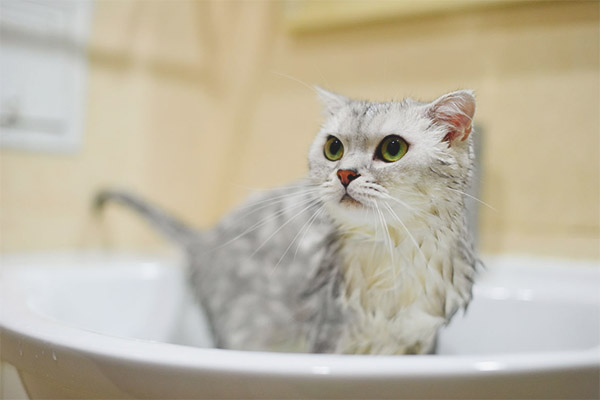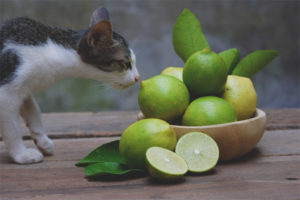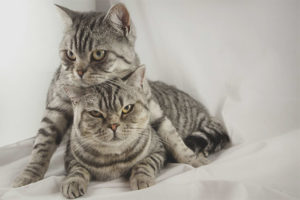The content of the article
It is no secret that feline animals independently produce hygiene of their bodies, licking wool and genitals. However, after childbirth or surgery (caesarean section), the cat may lack the strength and ability to take care of itself - all its attention is taken away by the offspring.
In this case, the caring owner needs to know when to start washing the pet and how to properly carry out this procedure so as not to injure a weakened body.
Can I bathe right after childbirth
The female during labor activity experiences severe physical and psychoemotional stress, so in the first 7 days she should not leave the place with the kittens for a long time. Basically, she performs her usual activities - she goes to the toilet, eats and drinks water. It is advisable to arrange the tray and bowl in the same room with the “nest” so that mother can observe the brood.
During this period, all hygiene procedures are reduced to replacing the litter in the box, but there can be no talk about bathing (even local) for a number of reasons.
- Most cats are afraid of water and difficult to carry the procedures associated with it. And stress for a nursing cat is dangerous by reducing the amount of milk or the complete cessation of lactation, changing its smell or taste.
- On the nipples of the animal may remain particles of household products (shampoo, soap, etc.). In the process of feeding, newborn kittens lick off this chemistry, which can cause them severe poisoning, vomiting and diarrhea, and the weakest in the litter can even die.
- Incorrectly chosen water temperature (too cold or hot) can trigger inflammatory processes in the urogenital system or in the female's mammary glands.
Of course, the owner is hard to observe the bloody, felled and stuck wool of the animal. But in the first week, he can only try to gently remove the lumps with a mite cutter, comb it out with a soft comb (and you should not take the pet out of the nest). If stuck tackles can not be combed, then gently moisten them with warm water.
When to start hygiene
Unlike dogs, cats do not have to bathe after giving birth. The effect of hard water from the tap and cosmetics violates the natural secretion of the sebaceous glands. Pet's skin begins to dry and peel off, seborrhea develops, wool becomes faded and falls out. Therefore, to resort to such a complex hygienic procedure is recommended no more than once every 2-3 months.
Bathing a cat after childbirth is possible after 2 weeks according to indications:
- the presence of birth marks (blood, placenta and other organic fluids) on the skin and coat;
- felted, dirty, sticky and matted wool;
- traces of feces;
- unpleasant smell from the animal.
If in the process of bathing, fleas were discovered, then it is necessary to understand that immediately after birth, the use of insecticidal preparations is strictly prohibited. To remove all ectoparasites, just put the cat in the bathroom with warm water, thoroughly moisten the hair to the neck area (avoid getting liquid in the ears and eyes). The water immobilizes the parasites, and you can comb them out of your wool with a thick comb.
If the cat after childbirth was smeared with household chemicals or paint, then it is advisable to cut the wool, and not try to wet it. Many chemical elements in a liquid medium, on the contrary, are activated and can cause severe burns, skin necrosis.
Rules for bathing cats after childbirth
The owner needs to minimize the stress factor for the pet, so the procedure should be performed confidently without chaotic movements, as well as promptly. Prepare yourself beforehand:
- Feed the cat in advance (at least 4 hours before bathing).
- Make sure the animal has empty the bladder and intestines.
- Wait until the female feeds the kittens, that is, the milk leaves the mammary glands almost completely.
- Heat the air in the bathroom to a comfortable temperature of 23-25 ° C.
- Put on the shelf all the necessary accessories (shampoo, 2 types of combs, soap, cotton pads, etc.).
- Type in a bath water up to 35 ° C, not more.
- Place a cloth or a rubber mat on the bottom of the tub or basin, which will prevent your pet from sliding.
After the procedure, remove the pet from the water, wrap it in a terry towel and dry gently. Then it is advisable to immediately dry the hair with a hair dryer at an average head and temperature conditions. This should be done in a room where there is no draft.
Of course, it is important to ensure the hygiene of the mother who has given birth to a cat, since pathogenic microflora can multiply in sewage and matted wool. Make sure that the animal is comfortable and calm during the procedure and remember that you can start bathing the female no earlier than 2 weeks after giving birth.
Video: how to buy and dry a kitten in 5 minutes












To send